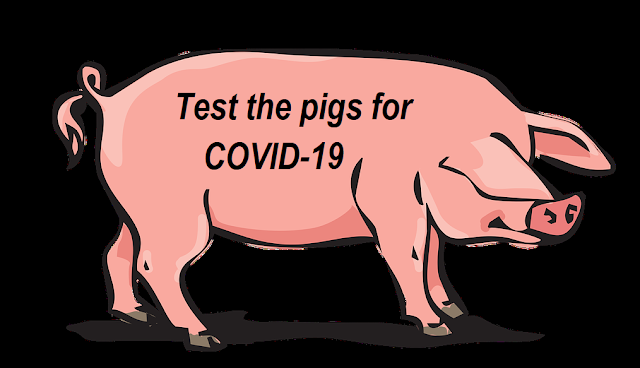Covid-19: Coronavirus ping pong between pigs and humans: is an infection reverting back from infected pigs conceivable?
The Corona Triangle Part II: Technical Report
Immo Fiebrig • Larissa Bombardi • Pablo Nepomuceno
Introduction
Within the last three months, the international press has reported several cases of slaughterhouse workers infected with COVID-19. According to the news, many of these slaughterhouses seem to be some sort of super-spreading hot spot.
Three countries - the United States, Germany and Brazil - drew the attention of the authors, because of their own nationalities and/or because of the representation that these countries have in the world’s production and export of pork. These countries will therefore be the focus of this report.
In terms of the ranking in world pig production1, China ranks first, followed by the United States and the European Union with Brazil coming fourth. Amongst EU countries, Germany ranks first and slaughters 23% of the EU total of pigs2. In these three countries of focus, there has been a considerable amount of complaint involving cases of slaughterhouse workers in precarious working conditions who have contracted the disease.
In Germany, for example, the case of the Tönnies slaughterhouse near Güthersloh in North Rhine Westphalia, became well known. With more than 650 persons diagnosed with COVID-19 by 17 June 2020, a new outbreak hotspot was reported, and caused protests amongst employees3. By 22 June 2020, more than 1,500 cases were confirmed positive out of 6,650 persons tested4.
In Brazil, the Public Ministry of Labor investigated 206 complaints involving contamination by COVID-19 of slaughterhouse workers up to 1 July 20205/6. This type of contamination of workers and, obviously, of their family members too, has even been interpreted as one of the vectors of the pandemic’s interiorisation in the country7.
In the United States, the Michigan state governor issued a security order requiring slaughterhouses to adopt a protection protocol for their employees8. The governor, in issuing the document, stated that slaughterhouses had proved to be an entry point for COVID-19 infections in other states9.
In our previous discussion article10, we elaborated the hypothesis - not yet proven - that COVID-19 infections may occur not only through transmission from person to person, or by viruses dispersed by human saliva particles and/or present in faeces, but also through infected pigs. At the end, we posed the questions: “Would pigs contract COVID-19, carry the virus and in turn infect us?” and, “Could we, if infected with SARS-CoV-2, pass on the virus to pigs?”
There is, as yet, no conclusive answer to these questions - it would require extensive animal testing and interdisciplinary studies on the ground. However, in the previous discussion article, we could show a spatial correlation between areas of intensive pig farming on the one hand and on the other hand, overlapping areas with a high population rate infected with COVID-19 in spite of low human population density. We found this salient spatial correlation using the example of the state of Santa Catarina, in southern Brazil, which is responsible for more than 60% of pork production in the country. In this current report, we have expanded our analysis of spatial correlation to the United States, Germany and the entire southern region of Brazil.
Read the full report here:












